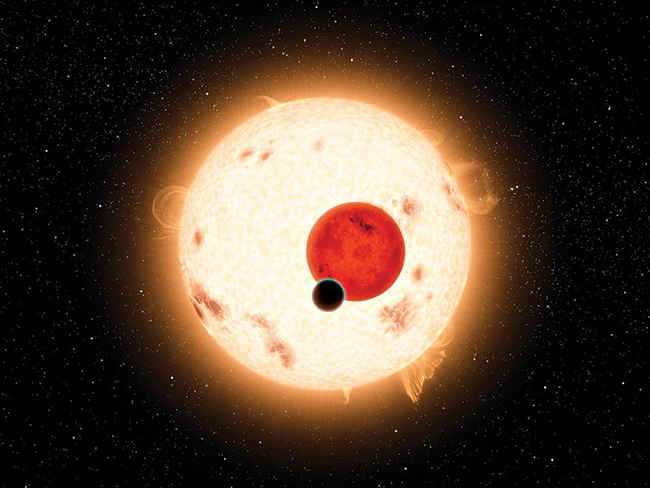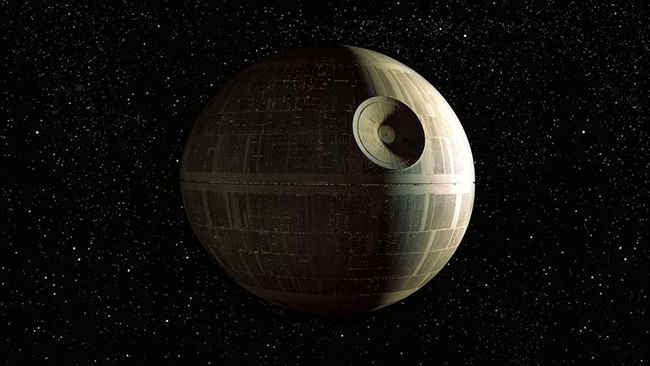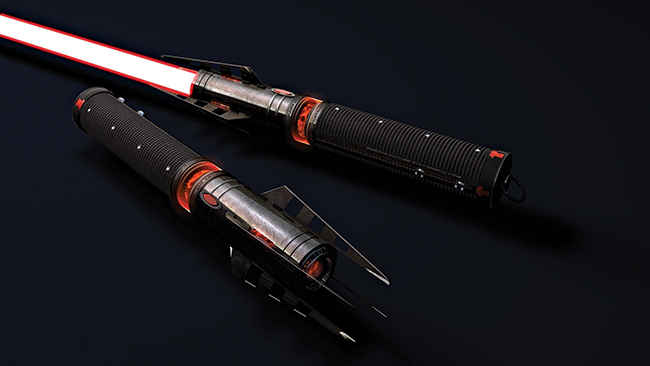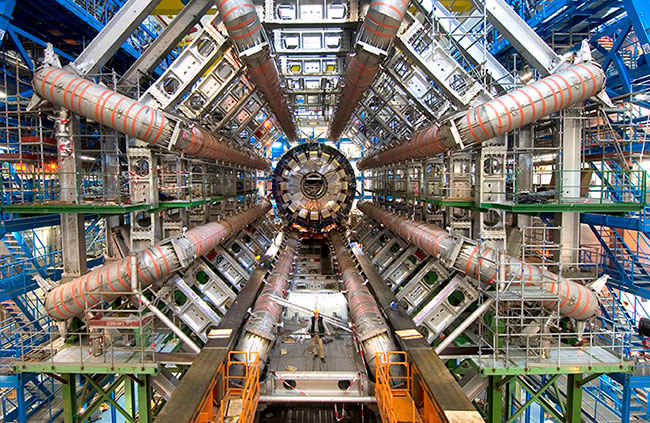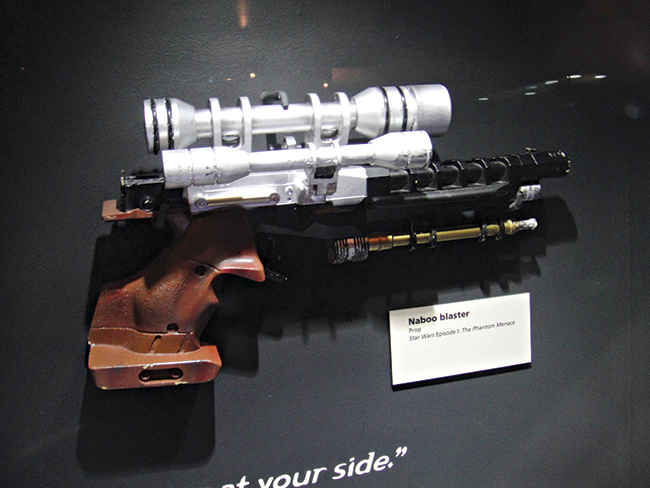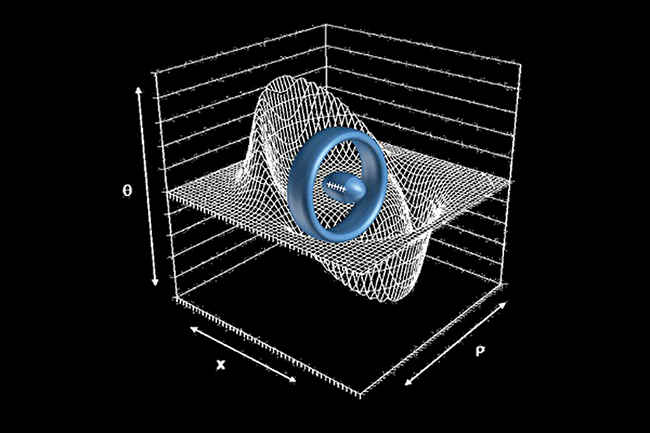Physics (and a little tech) of Star Wars explained
Before watching Star Wars Force Awakens in cinemas, find out whether the Light Saber is a plausible weapon, or a if a planet with two suns can actually sustain life. Get conclusive answers on the glorious physics and technology of the Star Wars universe.
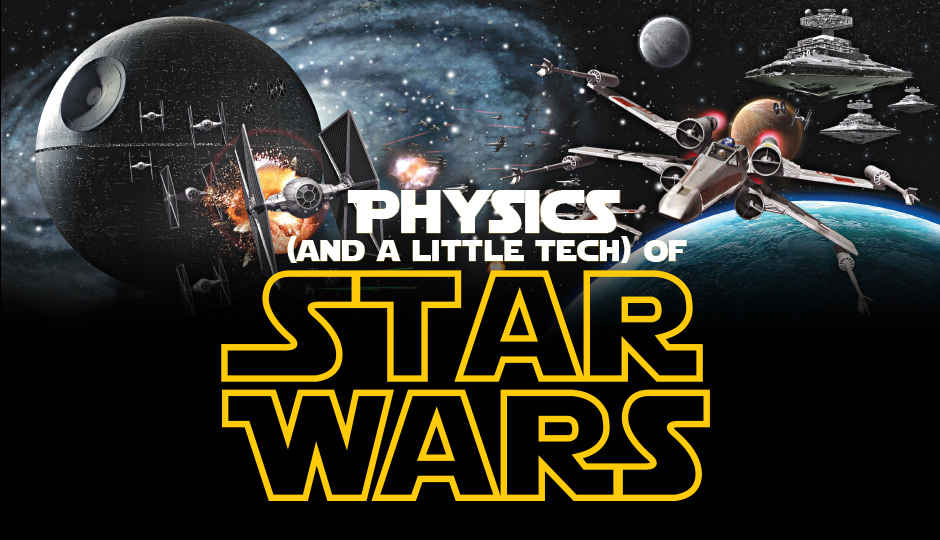
With the new installment of the Star Wars franchise slated to release December 25 (damn you Bajirao and Dilwale!), most of us would probably want to forward time and watch it as soon as possible. That John Williams score, freaking trailers and the general magnitude of what Force Awakens is likely to unveil gets us geeks jumpy to our core. In this article we aim to see Star Wars holds up when parsed through the filter of current day physics. We dare not be critical of something that is almost sacred to millions. But if not analytical, what else do you expect true geeks to be?
 Survey
SurveyTatooine: Fact or fiction?
One of the most iconic shots from the entire Star Wars saga is the one where Luke Skywalker stands on his home planet Tatooine and watches twin suns setting. Tatooine unlike Earth orbits around not one but two stars. It’s an awesome shot, sure, but does physics allow for a planet to orbit around a binary star system? According to recent studies and evidence it does. A Tatooine sunset is possible after all. For a long time it was believed that the combined gravitational force exerted by two suns would provide too hostile an environment for an orbit of a rocky planet and Tatooine might just be a figment of a creative genius’s imagination.
In 2011 however, scientists discovered a half gas and half rock-ice planet dubbed Kepler-16(AB)-b that orbits the binary star system Kepler 16-b. But how do the planets form midst all that gravity exerted by the twin suns? It’s simple. They don’t. According to a recent study a planet actually forms away from the binary star center and then gradually settles into an orbit. Also if the binary stars are extremely close together, a planet such as Tatooine can be in orbit far away from the twins; so far away in fact that the planet practically experiences the gravitational field of the twins as one.
So… Tatooine can exist, but can it support life? So far though it looks like our luck has maxed out as most real planets orbiting binary suns are cold and inhospitable as we know it. Tatooine as depicted in the movies however is largely a desert world which in theory can support life. But, there has never been a hint of rain or the presence of an oasis on the planet, so how do the natives of Tatooine survive in this arid, dry wasteland? Advancement in technology has now made it possible (if only in the ‘foreseeable’ future) to harvest water from moisture and indeed moisture farmers make their appearances in the movies. Astrobiology questions aside it is pretty cool that Star Wars foreshadowed the existence of a planet with twin suns – an amazing scientific discovery.
Hello Tatooine, two very good mornings to you
Death Star: Futuristic weapon or something out of a megalomaniac’s dream?
Even people not familiar with Star Wars surely would’ve heard of the Death Star. In an epic scene from the movie franchise the entire planet of Alderaan is blown apart to smithereens by a single ray from the Death Star. Alderaan is not a marble, or a dwarf planet. By all estimates, it is a solid Earth sized planet. How much energy does it supposedly take to destroy an entire planet? Does current technology come close to replicating the Death Star’s power.
A few back of the envelope calculations suggest that if the Death Star harnessed our Sun’s nuclear fusion produced energy, it would still need a weeks supply to blow up Alderaan. The Death star didn’t need a week. It needed a few seconds tops. Or maybe they used antimatter.
Thanks to Einstein we know that if we manage to convert matter to energy we can obtain a large amount of it. Antimatter, as its name suggests mirrors ordinary matter in regard to some properties. If antimatter collides with regular matter it results in mutual annihilation, releasing energy in the process. Some number crunching gives us an estimate for the mass of antimatter needed to blow Alderaan – a trillion tonnes. In the grand scheme of things that is not really very much and it is very likely that that much antimatter can be harvested and safely stored. Current day earthlings haven’t figured out a way to keep stored antimatter away from normal matter, but then we haven’t made a lightsaber either. So there you go. The inventors of the Death Star probably figured a way to stream antimatter. The antimatter met Alderaan’s ordinary matter and boom! The million dollar question is does any Earthbound technology come close to the Death Star’s power? Nope. Not even kind of close. Phew!
Lightsaber – Enough said
A lightsaber is easily the most famous weapon there is: real or not. We’re pretty sure there are people in Honolulu who haven’t heard of an AK-47 but mention a lightsaber and they’ll high five you for sure. A lightsaber is elegant, powerful, brilliant and awesome. Those are four words you never hear being associated with a weapon, do you? But, the lightsaber is all of that and more. What’s not to like about a powerful beam of contained energy that can literally cut through anything and one that you can wield like a freaking sword! If you didn’t know better you would call it a laser stick (you’d of course be decapitated for that travesty). Still the lightsaber does look like a fancy laser, yes, but it’s highly unlikely that the beam of energy is a laser. A laser is basically a controlled beam of electromagnetic radiation. For a “laser” lightsaber you would have to have a contraption that emits a beam of high intensity light and somehow at the end of a metre stop it. You see, light doesn’t do that. It just keeps going, traveling at a massive speed unless it is reflected, absorbed or… wait a minute, pulled back.
What has the gravitational pull to pull light? You guessed it right, its a black hole. Yes, those mysterious powerful beasts would somehow have to exist in in a lightsaber hilt to have a lasersaber. Of course this causes some practical issues with usability. A black hole will swallow all matter inside a radius, not to mention completely swallow the emitted laser beam. Also to fit inside the hilt, a black hole will have to have a small volume which means it would have to be heavy, really really heavy. If CERN found out a way of producing micro black holes that could be tuned or controlled this bizarre contraption might actually work, but we have another problem. Light is made up of photons which when interacting with other photons (read : second light saber) would really not behave like a solid (as in the films), instead just passing through unscathed. Should this debunk the whole laser based lightsaber theory? Maybe not.
Very recently some physicists from MIT and Harvard succeeded in defying what was known about photon interactions and clumped photons to form some sort of a pseudo molecule boosting the chance of someday using light to actually form a solid like structure. Scientists have succeeded in slowing down light considerably and recently a beam of light was actually trapped in a crystal for almost a minute. Maybe, just maybe, one day scientists will succeed in combining these techniques and come up with a laser based lightsaber. Till then however we would have to let a lasersaber be, no matter how cool a portable black hole sounds.
Dear CERN how are those portable black holes coming along? We need our lightsabers please.
Can Physics offer some other explanation. Yes. It almost always can. Perhaps the energy beam of the lightsaber is made up of plasma, often referred to the as the fourth state of matter. Plasma is the state created when we superheat a gas to such an extent the atomic electron bonds break releasing charged ions that are very conducting. Plasma torches that can cut through common day materials have been made. But those are unwieldy, have small beams and require large amounts of energy. So, how can a plasma based lightsaber work? Here we go. The hilt of the saber houses all the advanced technology needed to guide, contain and power the saber. A powerful battery produces the plasma state which is then focused and passed via a crystal based optical setup to generate the saber’s unique glow and properties.
The beam is then recalled into the housing via some containment field. The energy is finally treated to a final state to trickle to the battery and complete one hell of a circuit. This looks great on a blueprint but present day batteries are in no way powerful enough to generate plasma, not to mention material science will have to make generation leaps to house this high temperature equipment and create focusing crystals for precise beams. Plasma solves the two problems posed by lasers. It will interact with another plasma based beam like a lightsaber should, and it is possible to contain plasma to form a limited length beam but the technology hasn’t quite caught up with our dreams (or rather George Lucas’s).
So is the lightsaber a possibility with current technology? Here's a video that explains it all by Dr. Michio Kaku – theoretical physicist, futurist and nerd-idol. While it may not exactly match what's written in the Star Wars canon, it is as close one can get to the real thing. Watch the video to know what a real lightsaber will look like.
Blasters : What are they anyway?
An inelegant weapon yes, but at close range even the most skilled Jedi appreciate the power of a blaster. But what are these blasters? They are certainly not laser guns. Like we discussed in the context of lightsabers, a laser beam basically consists of photons which travel at the speed of light. The beam from the blasters however moves much much slower than that. For one thing we can “see” those projectiles and the Jedi can even deflect them using their lightsabers. Interestingly, the US Navy has deployed a laser weapon on one of its ships : The USS Ponce. Inspired by Star Wars perhaps?
The typical Star Wars blaster however uses a fictitious energy rich gas in a chamber that is somehow supercharged with energy and converted to a coherent light filled beam or “bolt”. While this sounds like a simple construction there are plenty of engineering issues with the current available technology to develop a similar design. Dealing with the heat released on converting gas to energy, actuating the gas and forming a coherent beam and finally, coming up with a compact power source to achieve the above design. Beyond all this let’s ask a very important question: is a Blaster a practical weapon? Analysis suggests the speed of the blaster ‘bolt’ is less than a bullet. So why would you want to build one? It’s simple. A Blaster is cooler than a machine gun. Cooler trumps quicker and here in our discussion of Star Wars tech cooler is always better.
Too inelegant to be a Jedi weapon
Interstellar travel : Hyperspace and it’s unbelievable physics
Time and again in the Star Wars universe space ships cover incredibly large distances in relatively short time. By incredibly large we mean distances where light would take years to reach and by relatively short time we mean time scales accessible to mortal humans. How are these trips undertaken? Does physics have any explanation for these seemingly impossible journeys or are they simply a lazy writer’s plot device to allow interstellar travel.
According to Einstein’s special theory of relativity the speed of light is invariant so that sets a bound on the maximum speed a spaceship can theoretically achieve. The closer the space ship will get to lightspeed, the slower time will get and the more mass it will gain. Eventually the mass of the spaceship will inflate to an absurdly large number that cannot be powered for a journey in any conceivable way, not to mention that on return Han Solo’s kids would have aged more than him. So is there some way to cheat Einstein’s special theory of relativity and somehow circumvent this speed limit imposed by it. Apparently, we can and the cheat code is hidden in Einstein general theory of relativity.
If only folding space were easy
Now it is well know that Han uses ‘hyperspace’ for interstellar travel. What hyperspace might be is a hotly debated topic, not only in the science fiction geek community but also on the physics nerd table (Both groups have significant overlap of course). You see, space and time are not separate entities but are intricately linked and form the fabric of the entire universe. We call this fabric as spacetime. Think of spacetime as a two dimensional sheet stretched till the farthest eons of space and time. Now imagine two dots on the sheet, lets call them Tatooine and Alderaan. The dot between those two is the Millennium Falcon. Now imagine if the sheet allows expansion and compression, we could expand the gap between the Falcon and Tatooine and compress the gap between the ship and Alderaan. The points haven’t moved anywhere absolutely but still the Falcon is closer to Alderaan! This is essentially what a warp drive is imagined to do, expand spacetime behind and contract spacetime in front of a space vehicle to basically bring the destination to the vehicle enclosed in a sort of spacetime bubble. We’ve spoken about the Alcubierre drive many times before so we won’t bore you.
Another explanation for the casual interstellar travel depicted in Star Wars is the worm hole explanation. Ironically “Interstellar” did a good job of explaining it with the folded paper and holes so we won’t go into it here. Why haven’t we done it yet? Manipulating spacetime requires gargantuan amounts of energy, a scale we aren’t even close to reaching. And though elegant these aren’t the techniques the Melamine Falcon probably uses. A possible option is that Han actually accesses one of the many dimensions curled up in the universe (as proposed by String Theory) which allows him take shortcuts that wouldn’t be possible in a simple three dimensional world. All this sounds simple in theory but all this is as close to fiction as science can get.
Flight Dynamics and Star Wars : Not exactly a match made in heaven
Star Wars has an awesome collection of space vehicles, fighters and ships. Like in any other science fiction world these craft are powerful machines and capable of executing complex manoeuvres. But do they hold true to the laws of Physics of the known universe? Let’s find out.
Let’s start of with a refresher course in aerodynamics. All terrestrial aircraft need to generate lift to stay afloat. Hence, they are equipped with wings that essentially push against air and create a pressure difference that creates lift. You know where we’re leading up to… Yes wings are redundant in the vacuum of space. In space a vehicle need only use directional thrusters to change momentum and once it does it will continue uninterrupted, unless it enters another gravity field. One can of course argue that the craft we see in Star Wars have dual functionality – in space and for terrestrial applications. And of course the fact that the X-Wing wouldn’t be called the X-Wing without, well wings! Also banking (tilting of aircraft) is unnecessary other than for cool shots of these space craft zipping past the camera.
Robotics and Technology : Star Wars got there first
The droids in Star Wars were a big hit and R2D2 and C3PO have had a massive impact on popular culture. A fully functional droid however wasn’t realized until very recently and that droid too has little intelligence. While big corporations have had major successes with making robots for different purposes, we are yet to come up with a multipurpose and multi functional droid that is truly intelligent (ASIMO doesn’t count). Hopefully all that AI research done at Google and Facebook along with the cutting edge robotics produced by Boston Dynamics and DARPA will catch up soon.
Cybernetics is a very new field but traces of this emergent field were seen in the Star Wars movies when Luke and Annakin Skywalker were both fitted with some prosthetics that had cybernetic abilities. Basically the prosthetic arm was connected to the actual tissue in a way that neurons could simulate the artificial limb like they would a normal arm. Integrating neural pathways with state of art mechanics has not been so easy. There is however widespread interest in the technology circles for such projects and very recently a prototype of an advanced robotic prosthesis system dubbed “Luke’s arm” has been greenlit for further development by DARPA.
Another technology that caught the audience’s fancy was the Landspeeder hovercraft that Luke frequently uses to glide along on the desert land of Tatooine. We have something similar that ‘glides’ along really fast and transports people: Maglev trains. But those trains are dependent on the surface they run over whereas the hovercraft in Star Wars aren’t. In fact most of the levitating vehicles in Star Wars run on a gravity repulsing field that within the realm of current science knowledge looks hopeless. Still dear geek don’t be dejected. A working Landspeeder like vehicle was recently built and tested by a company called Aerofax. They use some sophisticated rotors combined with a flight control system that responds to the user. The company’s prototype basically brings the controls of a aircraft in flight to a terrestrial (almost) vehicle suitable for any terrain.
Also on the bright side a plethora of technology first seen in the Star Wars film has now made it to our lives (if not daily lives). From Holograms, artificial organs and vaporators we’ve perhaps been seeing real life imitate art. We’re not complaining!
The Force: Is it strong with you?
Finally, we come to one of the most discussed aspects of the Star Wars universe : the ever mysterious Force. The Force is a gift, an ability that heightens senses and allows the user to communicate and control matter like no other. If the Force is strong with you can levitate objects, crush things without touching them and also near predict the future! Before we explore if the Force has any origins in Physics a customary disclaimer is warranted. Since the subject of the force is so divisive and almost out of the realm of science most of the claims here are to be treated as just theories. The section takes more liberties with re-imagining physics.
Lets start with the Jedi Mind Trick. Research at Princeton University that conducted extensive experiments supports the theory that brain activity can change outcomes of events like coin tosses. This effect usually called psychokinesis is very very small and the results of the experiments have been criticized citing failure to eliminate statistical bias. While psychokinesis might be a strictly quantum effect and hence be very very small, how the Jedi’s scale that up remains a mystery.
Earlier in a Digit dmystify we spoke about virtual particles that pop in and out of existence and lend space what is called zero point energy. It might be possible that the Force is a manifestation of this energy. Perhaps force sensitive individuals like the Jedi have the ability to access these particles (they exist for such a small time that we haven’t able to isolate them till date) and hence the massive energy that pervades all of space and use to manipulate matter at a fundamental level. A major difficulty with providing ‘scientific’ explanations for the Force is that it is just so versatile. None of the above explanations explain the Force in all its glory. For example in order to transfer information (and not just energy) we might need particles that are not short lived, but then those particles might not interact well. For seeing the future the Force wielder might somehow be able to interact with tachyons – mysterious particles that travel faster than the speed of light.
But then those particles might not explain other properties of the Force. Maybe the Force is something what scientists have been missing for a long time : another fundamental force (like gravity, electromagnetic and nuclear) that basically exists as a field that Force sensitive beings are able to manipulate to their advantage. Many in the field of particle physics believe that there exists a energy field called the Higgs Field that gives all matter mass. Like the Force this field fills up space but unfortunately is not sufficiently equipped to lend the Force all its awesome powers. In conclusion this pretty much answers the question the section headline posed. No. The Force is not strong with you. Unless you are in an alternate reality, in which case stop reading this article and use the damn Force!
Bonus: Powering the Death Star
Now that we've had a meticulous analysis on the possibility of various weapons and tech from the Star Wars universe, it's time we discussed the amount of power they would be hogging down. How much power was actually needed for Qui-Gon's lightsaber which was able to penetrate a blast door? How many batteries will it take to power an X-wing Fighter? How many nuclear reactors will it take to destroy an entire planet? The numbers are staggering and a highly-calculated and researched infographic has been created by the people over at Ebates to bring everything into perspective.
How Many Batteries Does It Take to Power Star Wars?
Ebates.com Ebates Coupons
